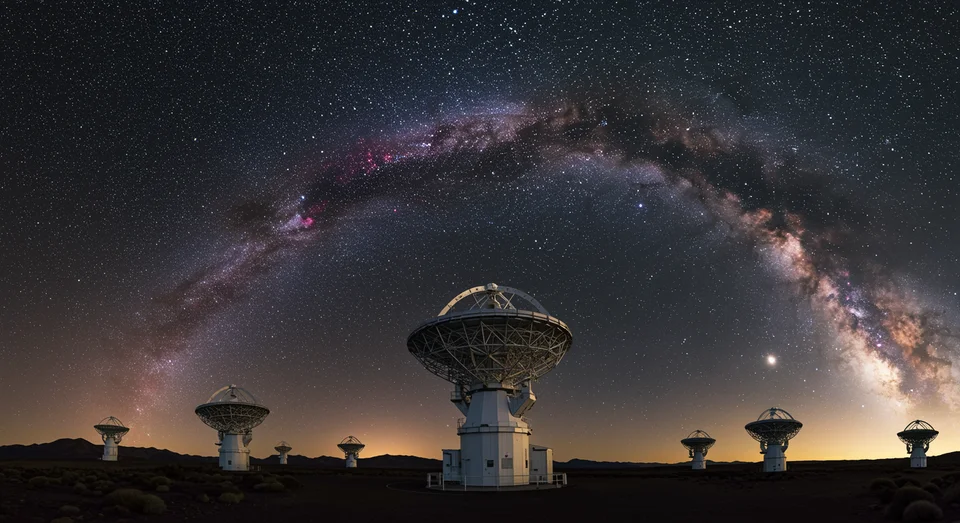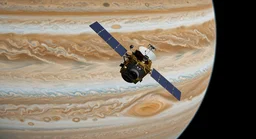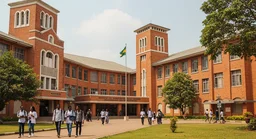ALMA Unveils Space Tornados Near Milky Ways Supermassive Black Hole
174 views
Astronomers peering into the heart of the Milky Way have uncovered a striking phenomenon: peculiar filamentary structures swirling near the supermassive black hole that dominates our galaxy's center. Dubbed "space tornados," these filaments are not merely passive features of the cosmic landscape but active participants in a tumultuous cycle of gas emission and replenishment. Using the unparalleled precision of the Atacama Large Millimeter/submillimeter Array (ALMA), researchers traced molecules such as silicon monoxide (SiO), revealing how shock waves interact with molecular clouds to create these enigmatic formations.

The Cosmic Ballet of Filaments and Molecular Chaos
The Central Molecular Zone (CMZ) surrounding the galaxy's nucleus has long been a focus of scientific curiosity due to its dense concentration of gas and dynamic activity. Yet, these newly identified filaments introduce an extraordinary layer of complexity to the region’s story. Stretching across parsecs, they appear to act as conduits for violent redistribution of matter, akin to tornadoes rampaging through the cosmos. Shock waves, driven by interactions between molecular clouds and bursts of energy from the supermassive black hole, trigger the formation of these structures, which subsequently expel complex organic molecules into the environment before dissipating into obscurity.
Such activity is far from chaotic randomness; it represents an intricate cycle where the filaments themselves eventually dissolve, only for the process to begin anew. This perpetual renewal, fueled by the interplay of shock waves and molecular clouds, suggests that these filaments are more than transient anomalies—they could be integral to the CMZ’s evolving chemistry and structure.
ALMA’s ability to detect minute traces of molecules like SiO has been pivotal in unraveling the filaments’ behavior. Silicon monoxide, often associated with high-energy shocks, serves as a chemical marker of the violent processes shaping the region. The presence of SiO and other molecules within the filaments underscores their role as dynamic agents in the galactic ecosystem, rather than static features.
A New Class of Galactic Phenomena?
While dense gas filaments have been observed in molecular clouds elsewhere in the galaxy, these "space tornados" appear to belong to an entirely different category. Their association with shocks and their cyclical nature distinguish them from the more familiar filamentary structures that serve as nurseries for star formation. This raises intriguing questions about their origins and their relationship to the supermassive black hole’s immense gravitational pull and energy output.
Future observations with ALMA aim to delve deeper into these mysteries. By refining the resolution and expanding the scope of their studies, astronomers hope to uncover whether these filaments are unique to the CMZ or if similar structures exist in other galactic nuclei. The implications of such discoveries could reshape our understanding of how black holes influence their surroundings, not merely as destructive forces but as catalysts for molecular renewal and distribution.
A Window Into Cosmic Evolution
The discovery of these filaments offers a rare glimpse into the dynamic processes at work in one of the most extreme environments in our galaxy. Beyond their scientific significance, they evoke a sense of awe at the intricate choreography of matter and energy unfolding on scales that defy human imagination. The CMZ, often overshadowed by the dramatic presence of the supermassive black hole, emerges as a vibrant stage where cycles of destruction and creation play out in perpetual motion.
As astronomers continue to probe the heart of the Milky Way, the filaments may ultimately reveal deeper truths about the interplay between gravity, shock waves, and molecular chemistry in shaping the universe. For now, they serve as a reminder that even in the most turbulent corners of space, there exists a profound order—an unyielding rhythm that binds the cosmos together in its eternal dance.




























